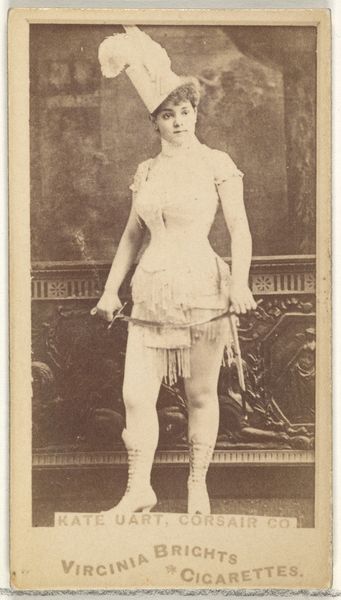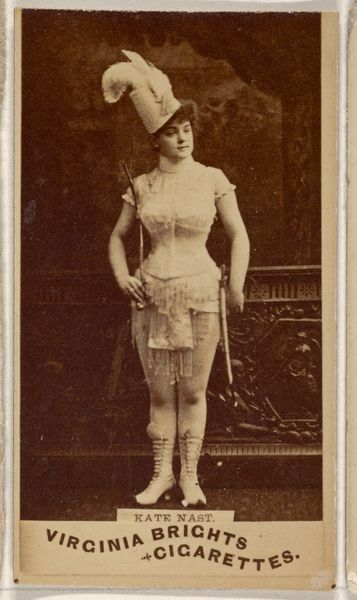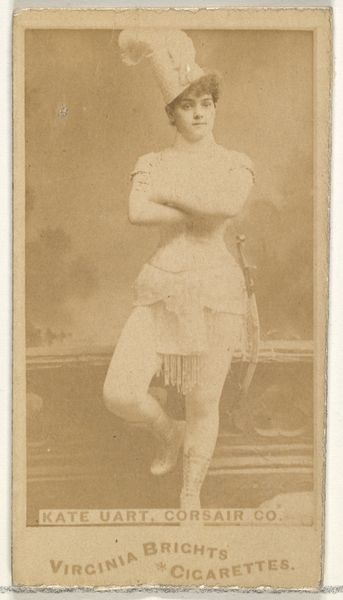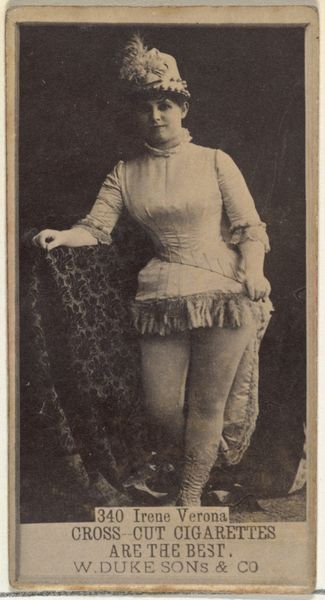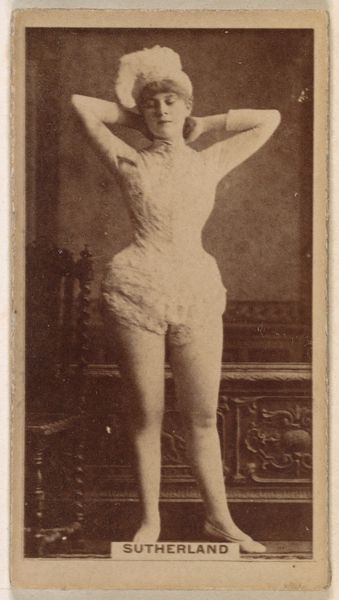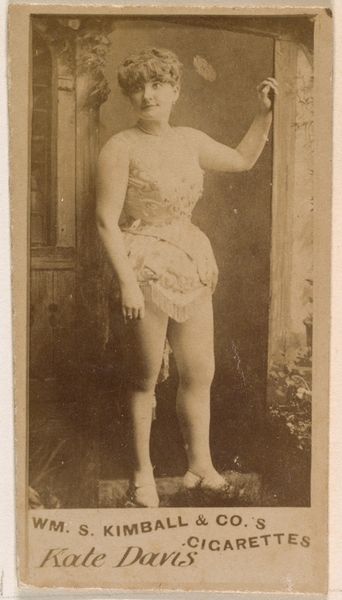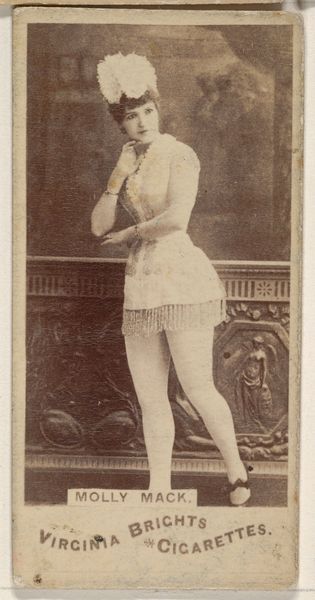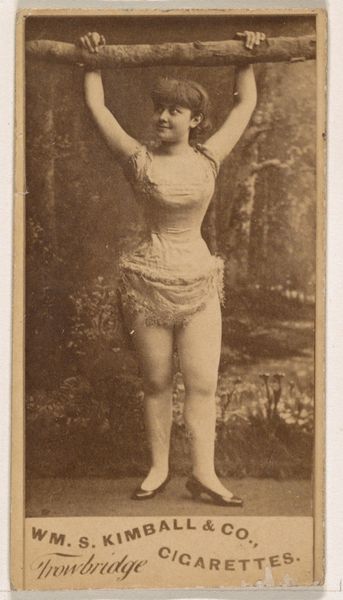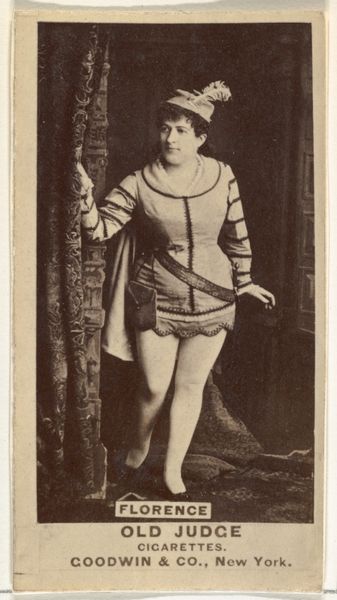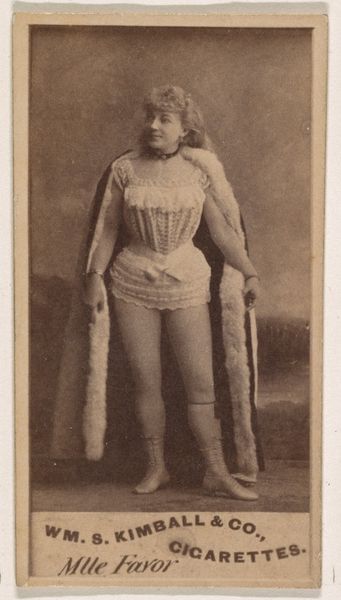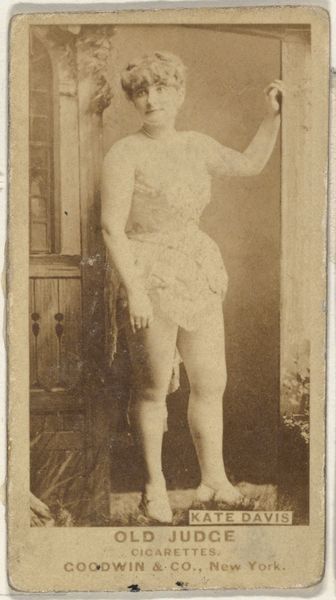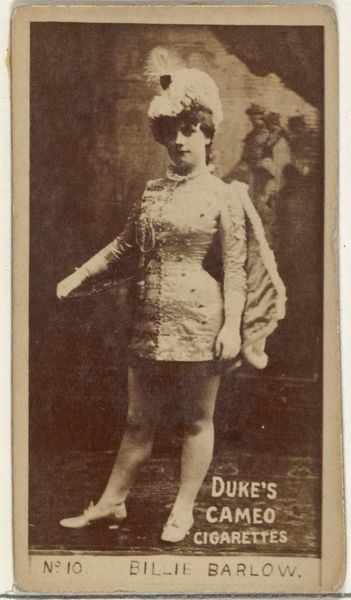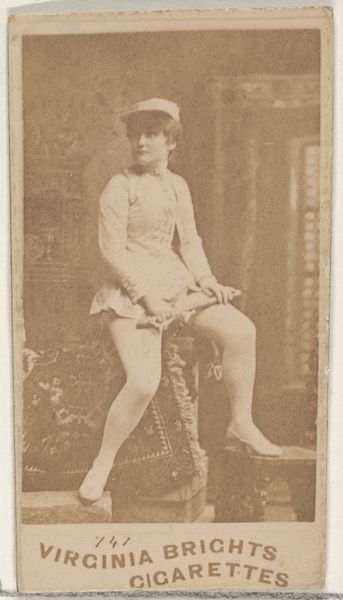
Kate Uart, from the Actors and Actresses series (N145-7) issued by Duke Sons & Co. to promote Duke Cigarettes 1880s
0:00
0:00
drawing, print, c-print, photography
#
portrait
#
drawing
# print
#
c-print
#
figuration
#
photography
#
19th century
#
miniature
Dimensions: Sheet: 2 11/16 × 1 3/8 in. (6.8 × 3.5 cm)
Copyright: Public Domain
Curator: Here we have a rather curious artifact – a cigarette card dating from the 1880s. It was produced by W. Duke, Sons & Co. as part of their "Actors and Actresses" series and features Kate Uart, presumably a performer of the era. Editor: The first thing that strikes me is the sepia tone and its slightly faded quality, instantly suggesting a bygone era. But there’s also something incredibly performative about her stance, almost defiant. Curator: These cards, printed using photographic and printmaking techniques, were essentially marketing tools, offering consumers collectable images to incentivize cigarette purchases. They tell us a lot about the public’s fascination with performers and celebrities at the time. It speaks to the growing celebrity culture of the late 19th century and the use of female performers’ images to endorse products, something not unfamiliar to our times, although the medium has radically changed. Editor: Absolutely. Kate Uart's gaze is direct, powerful even. Despite the antiquated attire – that elaborate hat, the fringed costume – she exudes a sense of agency. One might even explore questions of performativity related to how gender itself was viewed as something performative in public spaces. Consider how these women were being sold not only cigarettes but a certain type of feminine ideal – controlled, appealing, yet still assertive. What power structures were implicit? Curator: What's fascinating too is how Duke, Sons & Co., used photography to create this ideal image. Think of the layers of social context being conveyed: expanding consumerism, theatrical representation and women entering public space… and smoking becoming ever more widespread and, dare I say, encouraged. Editor: Yes, that intermingling of pleasure, performance, and promotion is hard to ignore. You have to wonder about Uart herself – did she see the social impact, the web of meanings woven into something as simple as a cigarette card? Curator: Perhaps not in the same way we do today. What matters is, it gives a little portal into the concerns, aspirations, and visual language of that historical moment. Editor: This card, seemingly a small thing, is quite dense with information, reflecting layers of social, commercial, and gender politics of the 1880s. Curator: Precisely. And the confluence of all this encapsulated into a single portrait helps reveal that nothing, even a cigarette advertisement, can escape conveying a range of complex ideas.
Comments
No comments
Be the first to comment and join the conversation on the ultimate creative platform.
